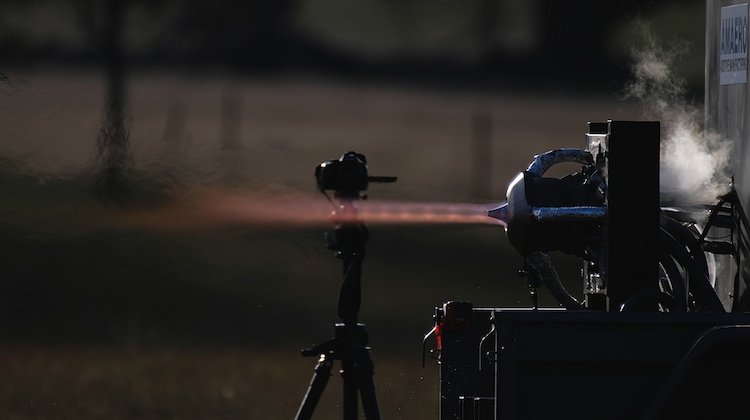
Monash University researchers have successfully fired a rocket engine built with 3D printing technology that will be shown at an upcoming international conference.
The rocket engine features a unique “aerospike” design that Monash says helps maintain efficiency as the rocket increases in altitude.
The University has established a new company, NextAero, that will showcase its concepts to the aerospace industry, starting at the International Astronautical Congress due to be held in Adelaide on 25-29 September.
The new venture builds on Monash’s experience in this sector, following the building of the world’s first jet engine using 3D printing technology, also known as additive manufacturing, by Amaero, the specialist engineering company created by the University to make the technology available to Australian industry.
The jet engine was featured at the 2015 Avalon Airshow.
“Traditional bell-shaped rockets, as seen on the Space Shuttle, work at peak efficiency at ground level. As they climb the flame spreads out reducing thrust. The aerospike design maintains its efficiency but is very hard to build using traditional technology,” Amaero engineer Marten Jurg said in a statement.
“Using additive manufacturing we can create complex designs, print them, test them, tweak them, and reprint them in days instead of months.”
Monash University head of the material science and engineering department Nick Birbilis noted the project went from a concept to being test fired in four months.
Further, Birbilis said a host of industries beyond aerospace stood to benefit from 3D printing technology.
“Through our spin-out company, Amaero, Australian companies can design, print, and test metal components for everything from aerospace to surgical instruments, hose fittings to air conditioning parts”, Birbilis said.
NextAero project lead Graham Bell said 3D printing technology allowed researches to “focus on the features that boost the engine’s performance, including the nozzle geometry and the embedded cooling network”.
“These are normally balanced against the need to consider how on earth someone is going to manufacture such a complex piece of equipment. Not so with additive manufacturing,” Bell said.















